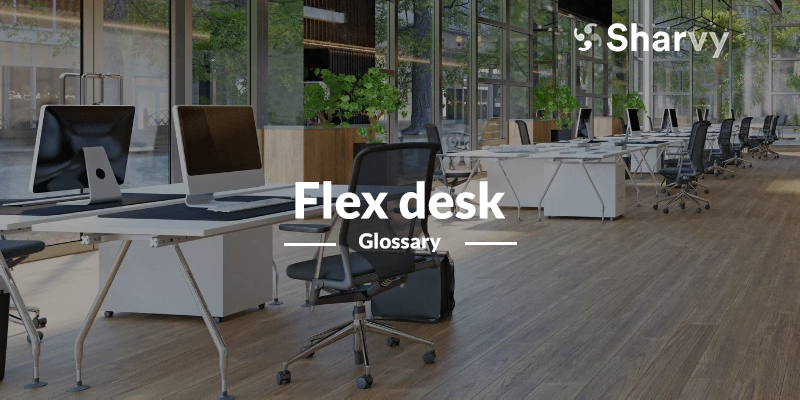What is the flex desk? – Definition
The flex desk is simply another term for the flex office. In other words, it is a work organisation in which employees do not have a dedicated office. As a result, they are free to choose where to work according to their needs, missions, and tasks for the day.
Thus, the flex desk is also related to the concept of the “clean desk”. In correlation, the flex desk implies that offices are shared between employees. This is why employees must ensure that the workspace they have used during the day, is tidy and clean to welcome another employee the next day.
Note that the flex desk concept is not new! Some American multinationals had already implemented this concept in the 1990s. However, it was only in the 2010s that this concept gradually gained ground. In addition, the Covid-19 crisis and the development of teleworking have encouraged many companies to evaluate its relevance.
Why do companies choose the flex desk?
Under the impulse of teleworking, the number of empty offices is increasing! However, these unused and under-optimized spaces cost companies money in real estate charges and/or cleaning.
This is why many companies are attracted to the flex desk primarily by the financial aspect. Although this work organization requires careful preparation, it allows them to determine a desk-sharing ratio. In most cases, companies opt for a ratio of 0.7 – 7 workstations for every 10 employees. As a result, many companies manage to reduce their workspaces by up to 40%, thus making significant savings on their real estate budget.
At the same time, the flex desk is an innovative way to attract and retain talent. In essence, it offers more autonomy and flexibility at work. It also allows teams to be decompartmentalized! Indeed, each day is a vector for new encounters in a flex desk layout. So, it becomes possible to be next to the CEO, the HR director, or whatever! It’s a virtuous mix that creates a dynamic working environment.
When properly implemented, the flex desk makes it possible to meet employees’ new expectations and improve everyone’s productivity. As a result, everyone wins, both the employees and the company!
What are the essential prerequisites for a successful transition to the flex desk?
4 key requirements exist for a successful transition to the flex desk.
1. Rethink the layout of your space
Make sure you have different spaces adapted to the needs of each person. For example, apart from open spaces, remember to create concentration areas so that your employees can isolate themselves if they feel the need (call-box & acoustic box). Also, think about informal and collaborative meeting rooms. But also spaces for relaxation and conviviality!
2. Deploy an adequate information system.
The second important point is to deploy internal tools and an adequate information system. The increase of hybrid working and the teleworking means that good collaboration and remote communication tools must be installed. This ensures continuity of exchanges, no matter where the employees are located.
3. Support your employees and managers in this paradigm shift
Similarly, remember to support your managers and employees in this paradigm shift. To ensure that the change goes smoothly, remember not only to involve your employees from the start of the project but also to appoint an ambassador who will be responsible for sharing the teams’ expectations, needs, and concerns. This will help you understand your employees’ expectations and misgivings as well as possible. Thus, a day of learning and preparation for this new work organization can be worthwhile.
4. Create a culture of respect
Finally, a “culture of respect” must be created. For many employees, this comes naturally. However, some companies may need more civic-mindedness on the part of some people. Unfortunately, this can lead to internal quarrels! For example, because of the noise. Sharing an office requires some give and take on the part of each team. For example, the sales teams (regularly on the phone and/or by video conference) have to think about moving around in acoustic booths not to disturb the people around them.
This mentality is sometimes worked on in some companies several months before the change, for example, with conferences or thanks to the testimony of other companies.

